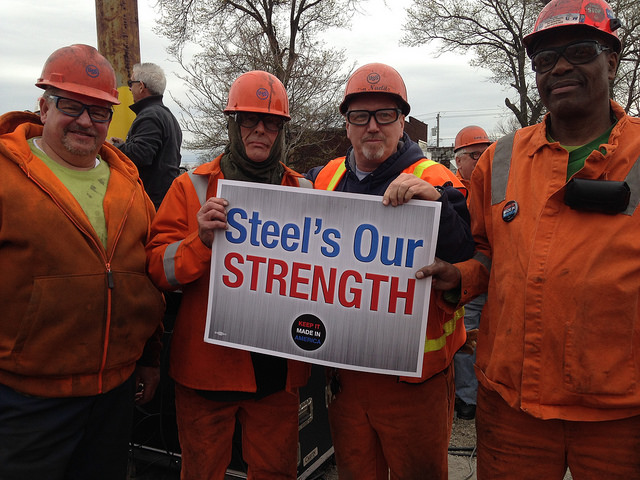
Here’s what you need to know.
Well look at that: President Trump has signed orders for tariffs on steel and aluminum imports.
Trump, whose views on trade policy have been remarkably consistent for decades, has been consistently speaking about the problems facing the domestic steel industry since his 2016 campaign.
He has been right to do so. Here's what you need to know about why a tariff is necessary, what it will mean for the economy, and what it means for American steelworkers.
There's a real problem facing American steelmakers: Overcapacity
The international market is swamped with steel. The sector has grown to over 2,300 million metric tons (MT), but only needs approximately 1,500 MT to meet global demand. That's 800 MT worth of annual steel production online that the market isn't asking for. Most of this overcapacity has come from China, home to the world's largest (and largely state-owned) steel industry, which alone created 552 MT of overcapacity between 2007 and 2015.
The results have been predictable: Layoffs in the United States, steelworker marches across Europe. Trading partners with domestic steel industries have pressed the Chinese government to reduce its capacity and eliminate the massive subsidies with which it props up its steelmakers. China's response has been to acknowledge the problem, agree to reductions – and has repeatedly failed to follow through on its commitments.
The Trump administration's tariff will allow industry in the United States – currently the most open steel market on the planet – a respite from this warped market, hire back workers, and regain market share, which has increasingly gone to import competition. Total steel imports were up more than 15 percent in 2017.
What will happen to the sector larger economy? Look to the 2002 George W. Bush steel tariffs.
In response to significant import competition and a wave of bankruptcies, President Bush put up tariffs of similar scope and size in 2002. Just like the howls coming from some in Congress now, there were dire warnings of an economic apocalypse from free-trade acolytes then, too.
Yet nothing of the sort happened.
The International Trade Commission (ITC) found that President Bush's trade action had no discernible economy-wide effects – and may have even resulted in an overall welfare gain of .0006 percent of GDP.
Overall sales and profits from steel consumers increased the year following the action compared to the year before. The ITC even noted that, within the broad definition of "steel-consuming industries," employment even increased in the following year, and productivity and wages in those industries increased over a three-year period.
And how did the domestic steel industry react? With room to stabilize, restructure, and consolidate – it reduced production costs and increased productivity.
What will this mean for steelworkers?
It will mean a lot. If you ask Onika Rivera of Lorain, Ohio, it means a chance for workers to retain their healthcare benefits.
For Jim Johnston of North Braddock, Pennsylvania, it will mean being able to financially plan past the next two or three years, and make his mortgage payments.
And for the workers Dan Simmons represents in Granite City, Illinois, it will mean going back to work.
